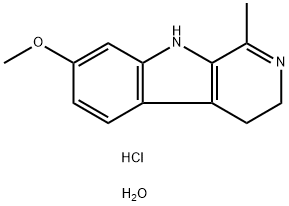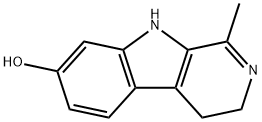HARMALOL HYDROCHLORIDE DIHYDRATE , 85.0-99.8% , 6028-00-8
CAS NO.:6028-00-8
Empirical Formula: C12H12N2O.HCl.H2O
Molecular Weight: 254.72
MDL number: MFCD00150053
PRODUCT Properties
| Melting point: | 265-268 °C (dec.) |
| storage temp. | Refrigerator (+4°C) |
| solubility | DMF:10.0(Max Conc. mg/mL);36.67(Max Conc. mM) DMSO:1.0(Max Conc. mg/mL);3.67(Max Conc. mM) Ethanol:2.0(Max Conc. mg/mL);7.33(Max Conc. mM) |
| form | A solid |
Description and Uses
Harmalol is a β-carboline alkaloid and an active metabolite of harmaline that has been found in P. harmala and has diverse biological activities.1,2,3,4,5 It is an inhibitor of dual-specificity tyrosine phosphorylation-regulated kinase 1A (DYRK1A; IC50 = 0.63 µM) and monoamine oxidase A (MAO-A; IC50 = 0.66 µM).3 It is selective for DYRK1A over Cdk1, Cdk5, CK1α1, Clk4, DYRK2, Pim-1, and GSK3β but also inhibits DYRK1B and Clk1 at 10 µM. It inhibits proliferation of H4 human glioblastoma cells (IC50s = 23.7 µM). Harmalol (0.5-12.5 µM) reduces increases in the levels of the cytochrome P450 (CYP) isoform CYP1A1 induced by 2,3,7,8-tetrachlorodibenzo-p-dioxin (TCDD) in HepG2 cells and prevents TCDD-induced activation of the aryl hydrocarbon receptor (AhR) in guinea pig hepatic cytosolic extracts.4 It reduces glutamate-induced cytotoxicity, cytochrome c release, caspase-3 activation, and the production of reactive oxygen species (ROS) in PC12 cells when used at a concentration of 25 µM.5 This product is also available as an analytical reference standard (Item No. 35145).WARNING This product is not for human or veterinary use.



